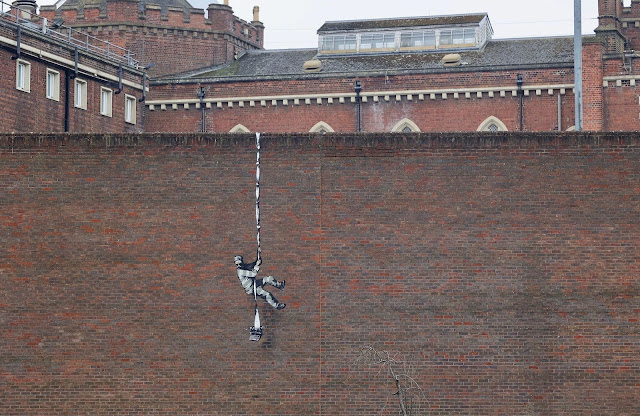In an era marked by rapid social and political changes, art continues to serve as a potent medium for dialogue and reflection. Two themes, nostalgia and political commentary, have prominently emerged, capturing the zeitgeist of our times. These motifs not only offer solace but also challenge viewers to confront and reconsider their views on contemporary issues. This exploration delves into how artists of the 2020s are using these themes to make impactful statements, and the resonance this has with audiences worldwide.
The Power of Nostalgia in Modern Art
Nostalgia, with its bittersweet recall of the past, has found a unique place in contemporary art. Artists leverage this sentiment to create works that evoke a sense of shared memory and collective yearning for times perceived as simpler or more meaningful. This can be seen in the works of artists like Banksy, whose piece "Create Escape" showed a typewriter hanging from the window of a former prison, invoking a bygone era and sparking conversations about freedom and confinement.
The Role of Retro Aesthetics
Many artists adopt visual styles from the past to evoke nostalgia while commenting on current issues. For example, Shepard Fairey's series of posters blends styles reminiscent of mid-20th-century propaganda with modern themes, bridging historical aesthetics with contemporary political discourse. This juxtaposition invites the viewer to draw parallels between past and present social movements.
Political Art as Social Commentary
In the 2020s, political art has become a more crucial tool than ever for activism and social commentary. Artists like Ai Weiwei and JR use their platforms to address global crises, from immigration to the erosion of democratic freedoms, reflecting a direct and often confrontational style of artistic expression.
Tackling Contemporary Issues
Artists like Kara Walker and Hank Willis Thomas focus on racial and social justice, creating works that challenge viewers to confront uncomfortable truths about society. Walker's silhouette installations and Thomas's provocative sculptures serve as powerful reminders of racial inequities and encourage a dialogue about the path to equality.
Art in the Age of Social Media
The rise of social media has transformed political art, allowing artists to reach wider audiences and engage in real-time commentary on unfolding events. Platforms like Instagram and Twitter have become arenas where artworks can go viral, amplifying their impact far beyond traditional galleries. Artists such as Dread Scott and Tania Bruguera utilize these platforms not just to display their art but to inspire action and participation in global movements.
Case Studies: Reflecting on Major Works
The Intersection of Art and Protest
During the global protests following events like the George Floyd murder, street art became a canvas for public sentiment. Murals by artists such as Betye Saar and Faith Ringgold not only beautified cities but also served as focal points for community solidarity and protest. Their works, rich with symbolism and emotion, provided a voice to the voiceless and turned public spaces into places of reflection and resistance.
Digital Art and Political Discourse
Digital artists like Refik Anadol use data and AI to create visual representations of political and social conditions, offering a high-tech critique of issues like surveillance and privacy. Anadol's installations invite viewers to see the unseen forces at play in our digital world, prompting reflection on the implications of living in a data-driven society.
The Future of Nostalgia and Political Art
As we look forward, the interplay between nostalgia and political art is likely to evolve in response to the world's changing social and political landscapes. These themes will continue to resonate as artists find new ways to blend past aesthetics with modern-day commentary, creating works that not only reflect our times but also help shape our responses to them.
In conclusion, the rich tapestry of nostalgia and political art in the 2020s offers a mirror to society, reflecting our fears, hopes, and tensions. By engaging with these works, audiences are invited to ponder their own place within these narratives, fostering a deeper understanding of themselves and their communities in the process. As long as artists continue to push the boundaries of expression, art will remain a crucial pillar in our collective journey through history and culture.




.jpg)







No comments:
Post a Comment